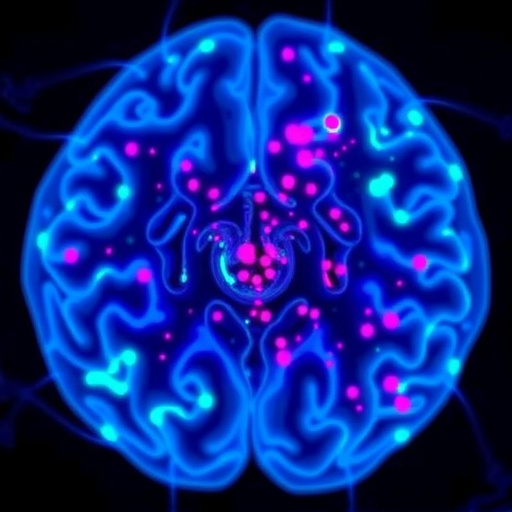
In a groundbreaking study published in BMC Cancer, researchers have unveiled compelling evidence that the inhibition of c-Abl, a proto-oncogene, dramatically impairs the aggressive behaviors of glioma cells, including proliferation, invasion, and migration. These findings shed new light on the molecular underpinnings of glioma progression and open promising avenues for targeted therapeutic strategies against this notoriously resilient form of brain cancer.
Gliomas represent one of the most lethal and treatment-resistant cancers of the central nervous system. Despite advances in surgery, chemotherapy, and radiation, patient survival rates remain dismally low, largely due to the tumor’s capacity to proliferate uncontrollably and infiltrate healthy brain tissue. Understanding the signaling pathways that drive these malignant processes is imperative for developing more effective treatments. This study centers on c-Abl, an oncogenic tyrosine kinase with established roles in various malignancies, yet its precise function in glioma biology has remained ambiguous until now.
Using a sophisticated combination of high-throughput RNA sequencing and targeted functional assays, the researchers meticulously dissected the downstream effects of silencing c-Abl in U-87 glioma cells, a widely accepted in vitro model for human glioma. Knockdown of c-Abl led to a pronounced shift in gene expression profiles, particularly highlighting disruptions in cell cycle regulatory pathways. These molecular alterations correlate mechanistically with the observed reductions in cell proliferation, suggesting that c-Abl actively orchestrates cell cycle progression in glioma cells.
.adsslot_qok4F2VBzs{width:728px !important;height:90px !important;}
@media(max-width:1199px){ .adsslot_qok4F2VBzs{width:468px !important;height:60px !important;}
}
@media(max-width:767px){ .adsslot_qok4F2VBzs{width:320px !important;height:50px !important;}
}
ADVERTISEMENT
Quantitatively, the suppression of c-Abl expression culminated in a 7% decrease in cell viability at 48 hours, which became even more pronounced at 72 hours, with a reduction exceeding 15%. Such statistically significant declines underscore the potential of c-Abl as a critical driver of tumor cell survival and growth. Alongside viability, the study examined glioma cell motility through transwell invasion and migration assays, revealing nearly 50% and 41% decreases respectively, following c-Abl silencing. These findings implicate c-Abl not only in proliferation but also in metastatic capabilities.
Delving deeper, the investigation identified a notable downregulation of key molecular markers associated with proliferation and epithelial-mesenchymal transition (EMT), such as Ki67, Snail, and Vimentin. Ki67 is a well-established marker of proliferative capacity, while Snail and Vimentin are integral to EMT, a process by which tumor cells gain enhanced migratory and invasive traits. The concurrent decline of these markers upon c-Abl inhibition signifies that c-Abl may modulate EMT pathways, facilitating glioma invasiveness and resistance to therapy.
To translate these in vitro observations into a physiologically relevant context, the research team employed an in vivo mouse xenograft model. Mice implanted with U-87 derived tumors were treated with dasatinib, a clinically utilized tyrosine kinase inhibitor known to target c-Abl among other kinases. Dasatinib administration achieved a striking reduction in tumor volume by over 50% within 24 days, remarkable evidence of the therapeutic potential embedded in targeting c-Abl.
Histological examinations further corroborated these findings; treated tumors exhibited increased necrotic areas, indicating heightened cell death, alongside diminished expression of EMT markers. This phenotypic transformation within the tumor microenvironment not only underscores the efficacy of c-Abl inhibition but also suggests a multifaceted impact on tumor biology, including impaired survival signaling and reversal of mesenchymal features critical for invasion.
The implications of these results are profound. They position c-Abl as a pivotal modulator in glioma pathogenesis, intertwining cellular proliferation, migration, and EMT in a convergence of pathways that fuel tumor aggressiveness. Targeting c-Abl disrupts these axes, resulting in diminished tumor growth and invasiveness—key factors that could translate to improved clinical outcomes if harnessed effectively.
While dasatinib offers a promising therapeutic angle, its current use in glioma treatment has been limited. This research invigorates interest in repurposing existing c-Abl inhibitors or developing next-generation compounds with enhanced specificity and blood-brain barrier penetrance to combat glioma more efficiently. Importantly, the detailed molecular insights provided by RNA sequencing and pathway analyses chart a roadmap for precision medicine approaches tailored to the unique signaling landscape of glioma.
Moreover, the study enhances our understanding of the oncogenic signaling networks that govern glioma behavior, providing valuable biomarkers for assessing treatment response or disease progression. The identification of gene expression changes linked to cell cycle dysregulation and EMT offer potential for developing complementary diagnostic tools alongside therapeutic interventions.
This research, spearheaded by Zhang and Liu, exemplifies the power of integrating genomics, cell biology, and in vivo modeling to uncover actionable targets within complex cancers. Their work paves a new frontier in glioma research, emphasizing the critical need to dissect and disrupt the molecular circuitry that sustains malignant phenotypes.
In the broader context of oncology, the findings reinforce a growing recognition of tyrosine kinases like c-Abl as master regulators of cancer cell dynamics beyond hematologic malignancies. The study elucidates how a kinase traditionally associated with leukemia can exert profound influences in solid tumors, broadening the therapeutic landscape for kinase inhibitors.
Future investigations will need to explore the combinatorial potential of c-Abl inhibitors with existing standard-of-care treatments, assessing synergistic effects on tumor eradication and resistance prevention. Additionally, clinical trials designed to evaluate safety, dosing, and efficacy in glioma patients are imperative to translate these compelling preclinical findings into real-world benefits.
In summary, the inhibition of c-Abl emerges as a potent strategy to suppress glioma cell proliferation, invasion, and migration, offering renewed hope against a cancer historically recalcitrant to conventional therapies. This paradigm-shifting discovery fosters optimism that unraveling key molecular drivers can yield groundbreaking treatments to improve the prognosis for glioma patients worldwide.
Subject of Research: The role of c-Abl proto-oncogene in glioma progression and its potential as a therapeutic target.
Article Title: Inhibition of c-Abl suppresses the proliferation, invasion and migration of glioma cells.
Article References:
Zhang, F., Liu, X. Inhibition of c-Abl suppresses the proliferation, invasion and migration of glioma cells. BMC Cancer 25, 1330 (2025). https://doi.org/10.1186/s12885-025-14764-y
Image Credits: Scienmag.com
DOI: https://doi.org/10.1186/s12885-025-14764-y
Tags: advances in glioma therapyc-Abl inhibition in gliomacentral nervous system cancersgene expression changes in gliomaglioma cell growth suppressionglioma migration and invasionhigh-throughput RNA sequencing in cancer researchmolecular mechanisms of glioma progressiontargeting proto-oncogenes in cancertherapeutic strategies for brain cancertreatment resistance in gliomasU-87 glioma cell model





